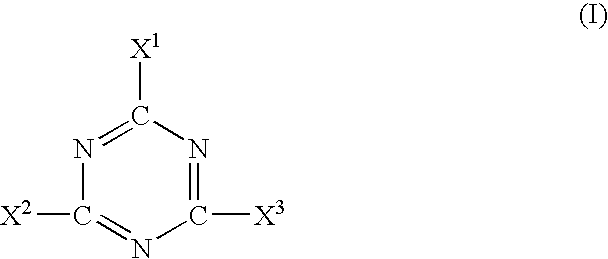Nonwoven highloft flame barrier
a flame barrier and highloft technology, applied in the field of nonwoven highloft flame barriers, can solve the problems of reducing wear life, brittle chars in fabrics, and not performing well as a flame barrier against large direct flame assaults for even short periods of time, so as to prevent autoignition, prolong the time, and extinguish any residual flame
- Summary
- Abstract
- Description
- Claims
- Application Information
AI Technical Summary
Benefits of technology
Problems solved by technology
Method used
Image
Examples
example ii
COMPOSITE ARTICLE EXAMPLE II
A commercial twin mattress constructed with the following materials:
Mattress Quilt Panel, Sewn with Non-FR Quilting Thread, Consisting of:
[0140]Class A commercial mattress ticking fabric from Blumenthal Mills Inc. (Aristocrat “22” T-VBS 701)[0141]1st layer under the ticking consisting of:[0142]nonwoven thermally bonded highloft flame barrier consisting of a fiber blend including:[0143]38% melamine / 47% modacrylic / 20% binder fiber[0144]with a preferred average batt basis weight of 381 g / m2 and average thickness of 32 mm in an uncompressed state.[0145]2nd layer under the ticking consisting of:[0146]1st layer of non-flame retardant (FR) polyurethane foam from Carpenter Co. (R17S type)[0147]3rd layer of 1 opsy nonwoven spunbond polyester scrim cloth from Hanes Converting Co.
Mattress Border Panel, Sewn with Non-FR Quilting Thread, Consisting of:[0148]Class A commercial mattress ticking fabric from Blumenthal Mills Inc. (Aristocrat “22” T-VBS 701)[0149]1st layer...
PUM
| Property | Measurement | Unit |
|---|---|---|
| density | aaaaa | aaaaa |
| density | aaaaa | aaaaa |
| thickness | aaaaa | aaaaa |
Abstract
Description
Claims
Application Information
 Login to View More
Login to View More - R&D
- Intellectual Property
- Life Sciences
- Materials
- Tech Scout
- Unparalleled Data Quality
- Higher Quality Content
- 60% Fewer Hallucinations
Browse by: Latest US Patents, China's latest patents, Technical Efficacy Thesaurus, Application Domain, Technology Topic, Popular Technical Reports.
© 2025 PatSnap. All rights reserved.Legal|Privacy policy|Modern Slavery Act Transparency Statement|Sitemap|About US| Contact US: help@patsnap.com

